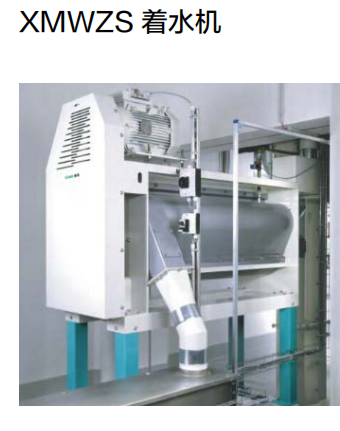Nov 28, 2023
Effect of wheat wetting time and optimal grinding moisture on flour quality and yield

DOUBLE SHAFT DAMPENER
Wheat milling is a complex process, in which wheat wetting time and grinding moisture are the key parameters that affect flour quality and yield. Wheat moistening time refers to the storage time of wheat under the condition of adding water, while grinding water refers to the water content of wheat before entering the mill. Proper control of these two parameters is essential to ensure the quality of flour and improve production efficiency.
1. The effect of wheat moistening time
1.1 Definition of Moisturizing Time
Moistening time refers to the time spent during wheat processing when wheat is stored and moisturized under appropriate temperature and humidity conditions.
1.2 Influencing Factors
Warm and humid conditions: The purpose of moistening wheat is to soften the hard gum protein in wheat, which is conducive to subsequent processing. Too high a temperature and humidity condition may cause the wheat to germinate, while too low a temperature will make it difficult to achieve a softening effect.
Wheat varieties: Different varieties of wheat have different requirements for moistening time, and some durum wheat may require a longer duration of moistening.
1.3 Importance
1.3.1 Protein softening
Proper moisturizing time helps to soften the protein. The hard gum protein in the flour will cause the dough to harden excessively, affecting the subsequent dough controllability, and through a reasonable moisturizing time, it can be softened, which is conducive to the preparation of pastry.
1.3.2 Flour color and texture
The time it takes to moisten the flour also affects the color and texture of the flour. A too short mowing time may result in a darker color of the flour, while too long a time may lead to an increase in the activity of oxidase enzymes in the flour, affecting the color of the flour.
1.3.3 Production efficiency
A well-controlled wheat runting time helps to increase production efficiency. The appropriate time for wheat processing can be done before the wheat enters the mill to improve the efficiency of milling.
2. Effect of optimal grinding moisture
2.1 Definition of grinding water
Mill moisture refers to the moisture content of wheat before it enters the mill, usually expressed as a percentage.
2.2 Influencing Factors
Wheat varieties: Different varieties of wheat have different requirements for grinding water.
Climatic conditions: The moisture content of wheat will vary in different seasons and under different climatic conditions.
2.3 Importance
2.3.1 Flour particle size
The water content of the mill is directly related to the size of the flour particles during the milling process. Moderate infusion moisture helps the wheat to be better broken in the mill, resulting in more uniform flour particles.
2.3.2 Yield and energy consumption
Reasonable grinding moisture can affect the yield of flour and the energy consumption of production. Too little moisture can make it difficult for wheat to break up sufficiently, affecting yields, while too much moisture can increase energy consumption.
2.3.3 Flour quality
The water content of the mill is also directly related to the quality of the final flour. Moderate moisture helps to produce a more homogeneous and delicate flour, improving dough handling and processability.
3. Best Practices
3.1 Control of wheat time
Real-time monitoring: Using advanced monitoring equipment, the humidity and temperature of wheat are monitored in real time to ensure that the most suitable conditions are met.
Wuxi Hasen Import And Export Co.,Ltd
Contact:Amina Zhu
Mobile:+8613812016908
Email:sale@immy.cn
Add:#68,Xindongan Rd,Xinwu Distt,Wuxi,Jiangsu,China 214000